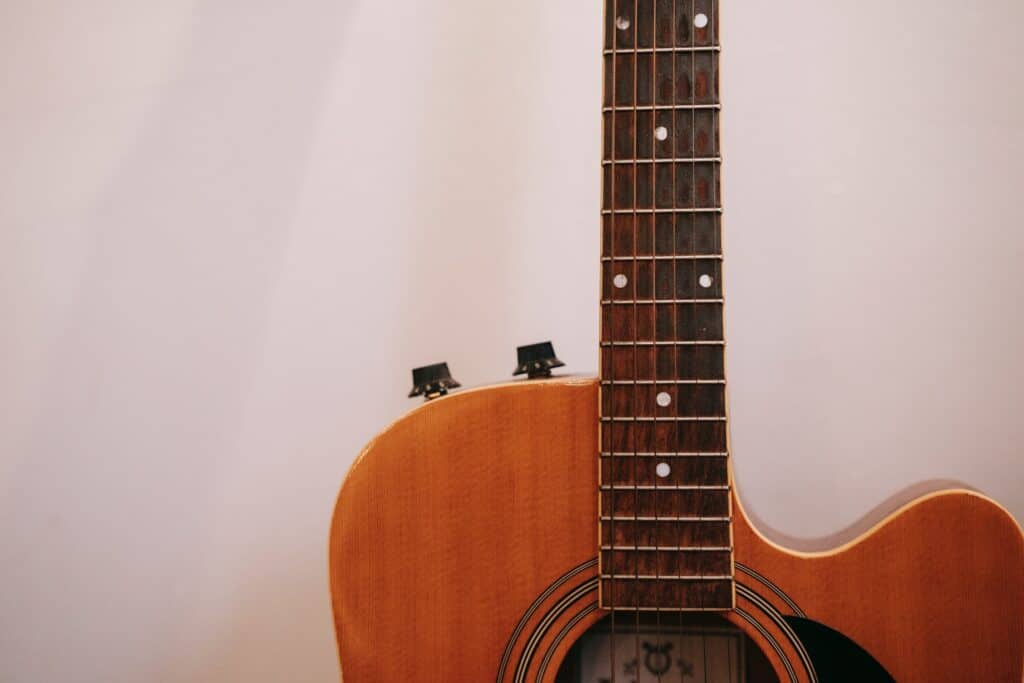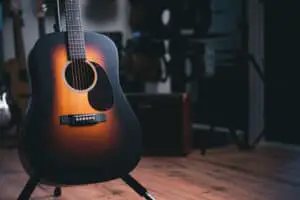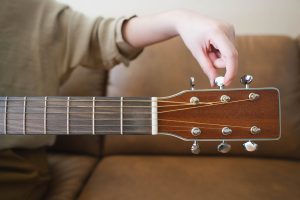
Did you know that there is a standard tuning for guitars? It’s not as random as you might think. In fact, there are specific notes that are tuned to create a particular chord progression. This makes it possible for guitarists to play together in harmony and follow along with other musicians more easily.
The standard tuning for guitars is E-A-D-G-B-E. The low E string is tuned to the note of E, while the A string is tuned to the note of A. The D string is tuned to the note of D, and so on. Each string corresponds to a different letter in the musical alphabet.
This article will explain standard tuning and how to achieve it on your guitar.
Standard Tuning for Guitar
The standard tuning for guitars is E-A-D-G-B-E. This means that the low E string is tuned to the note of E, while the A string is tuned to the note of A. The D string is tuned to the note of D, and so on. Each string corresponds to a different letter in the musical alphabet.
Tuner Recommendations
There are a few different types of tuners that you can use to achieve standard tuning on your guitar.
Electronic Tuner
The most common type is the electronic tuner. These tuners are small and easy to use. They usually have a display screen that will show you which string is currently being tuned and the pitch of that string.
Tuning Fork
A tuning fork can also be used to tune your guitar to standard tuning. To use a tuning fork, you’ll want to hold it by the stem and strike it against the head of your guitar. This will cause the string to vibrate and create a sound. You can then tune your string until it matches the pitch of the tuning fork.
Piano
You can also use a piano to tune your guitar to standard tuning. To do this, you’ll want to find the note of E on the piano and then pluck the low E string on your guitar. You can then tune the string until it matches the note’s pitch on the piano.
Achieving Standard Tuning
There are a few ways to achieve standard tuning on your guitar. The first method is by using a tuning fork. You can also use an electronic tuner or even tune your guitar by ear.
Tuning Fork
If you’re using a tuning fork, you’ll want to hold it by the stem and strike it against the head of your guitar. This will cause the string to vibrate and create a sound. You can then tune your string until it matches the pitch of the tuning fork.
Electronic Tuner
If you’re using an electronic tuner, you’ll want to pluck the string and adjust the tuning peg until the tuner tells you that the string is in tune.
Tuning by Ear
Tuning by ear is a bit more challenging, but it can be done. You’ll want to pluck the string and then listen to the note it produces. Then, you’ll want to find another string tuned to the same note. Once you’ve found that string, you can tune the string you’re working on until it matches the pitch of the other string.
Once you’ve achieved standard tuning, you’ll be able to play along with other guitarists more easily and better understand how to read sheet music. You’ll also find that chords will sound more consistent and that your guitar will be easier to tune in the future.
Learning Materials
If you’re interested in learning more about standard tuning for guitars, a few resources can help you. One is the book Guitar Fretboard Workbook by Brad Henecke. This book covers everything from tuning your guitar to how to read fretboard diagrams.
You can also find online tutorials that will show you how to tune your guitar to standard tuning. These can be found by searching for “standard tuning guitar” on a search engine such as Google.
YouTube is also an excellent resource for learning how to tune your guitar to standard tuning. There are many videos available that will walk you through the process step-by-step.
Tips and Tricks
If you’re having trouble tuning your guitar, try these tips:
- Make sure that you’re in a quiet place where you can hear your guitar clearly.
- Start by tuning the low E string to the correct pitch. Then, tune the A string to match that pitch. Once those two strings are in tune, you can use them to tune the other strings.
- Try using an electronic tuner or a tuning fork if you’re still having trouble.
- Don’t be afraid to ask for help! If you’re having trouble tuning your guitar, ask a friend or family member for assistance.
Conclusion
The standard tuning for guitars is E-A-D-G-B-E. This tuning allows guitarists to play together in harmony and follow along with other musicians more easily. You can achieve standard tuning by using a tuning fork, an electronic tuner, or tuning your guitar by ear. Once you’ve achieved standard tuning, you’ll find that your guitar will be easier to tune in the future.









